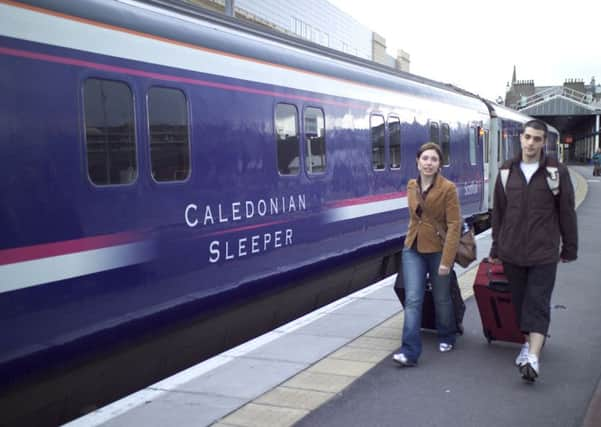Caledonian Sleeper has oldest trains on British rail network


The carriages used were typically built in the mid-1990s, according to Office of Rail and Road (ORR) statistics. The average age of 21.1 years is older than at any point in publicly available records and 60 per cent older than in 2006.
And travellers using the Caledonian Sleeper service also have to put up with Britain’s oldest trains, at 42 years old. Merseyrail, which runs trains in Merseyside, has the second oldest fleet at 38 years old. Both operators plan to introduce new rolling stock.
Advertisement
Hide AdAdvertisement
Hide AdThe Scotsman’s sister title, Scotland on Sunday, revealed yesterday that Caledonian Sleeper is planning to introduce new trains in April. Meanwhile, ScotRail and Virgin Trains East Coast are also bringing new fleets into service this year.
The ORR has previously said older trains can result in worse reliability, less comfortable journeys and poorer performance than modern versions, although it notes that older rolling stock can be refurbished.
TransPennine Express, which operates in northern England and Scotland, has the newest trains at an average of just nine years old.
Stephen Joseph, chief executive of rail and bus advocacy group Campaign for Better Transport, claimed the age of Britain’s trains shows “just how far the railways have to go to modernise”.
He said: “We’ve been promised new trains by several train operators and some are under construction – we now want to see these promises turn into reality.
“While some, like the famed Pacers in the North of England, do deserve the scrapyard, others can be refurbished to modern standards and could help deal with overcrowding on parts of the rail network.”
Pacer trains were built in the 1980s using parts from buses and were only intended as a short-term solution to rolling stock shortages.
ORR data shows the average age of rolling stock between January and March each year since 2001. A number of new trains were introduced following the end of British Rail in the mid-1990s, but the average age has risen during the past decade.
Advertisement
Hide AdAdvertisement
Hide AdBruce Williamson, spokesman for pressure group Railfuture, said this highlights “an uneven ‘feast or famine’ in the railways when it comes to investing”. He added: “We’ve got a lot of catching up to do.”
The Rail Delivery Group, representing train operators, said more than 5,500 new carriages will be in use across Britain by the end of 2020 and many other trains are undergoing major refurbishments.
Chief executive Paul Plummer said: “This will help to deliver our commitment to boost customer satisfaction so that Britain continues to have the most highly rated major railway in Europe.”
But the launch in October of a new fleet of trains costing £5.7 billion was marred by water pouring out of a faulty air conditioning unit and a 41-minute delay. The problems hit the first passenger service on new Hitachi-built Intercity Express trains as it travelled from Bristol to London.
Trains in London and south-east England are typically 18 years old, while regional services are 24 years old.
Manuel Cortes, general secretary of trade union the TSSA, which represents staff in the travel industries, said the rolling stock figures “come as no surprise to those of us who use trains on a regular basis”.
He went on: “Britain used to be proud of its reputation for giving the railways to the world. Now we just have, for the most part, a clapped-out system.”
ORR figures show that £4.2bn of taxpayers’ cash went to the rail industry in 2016-17.
Rail fares go up by an average of 3.4 per cent across Britain tomorrow, the largest rise in five years.